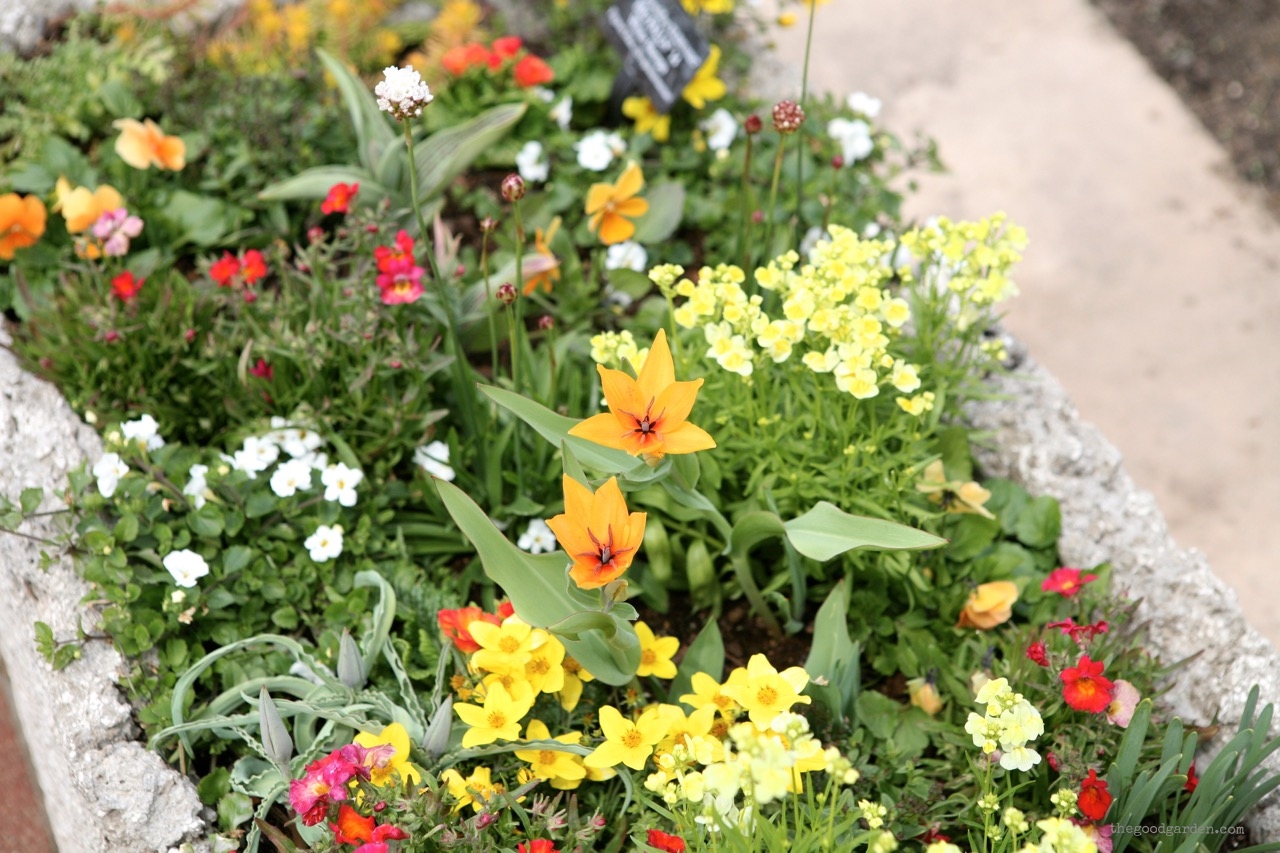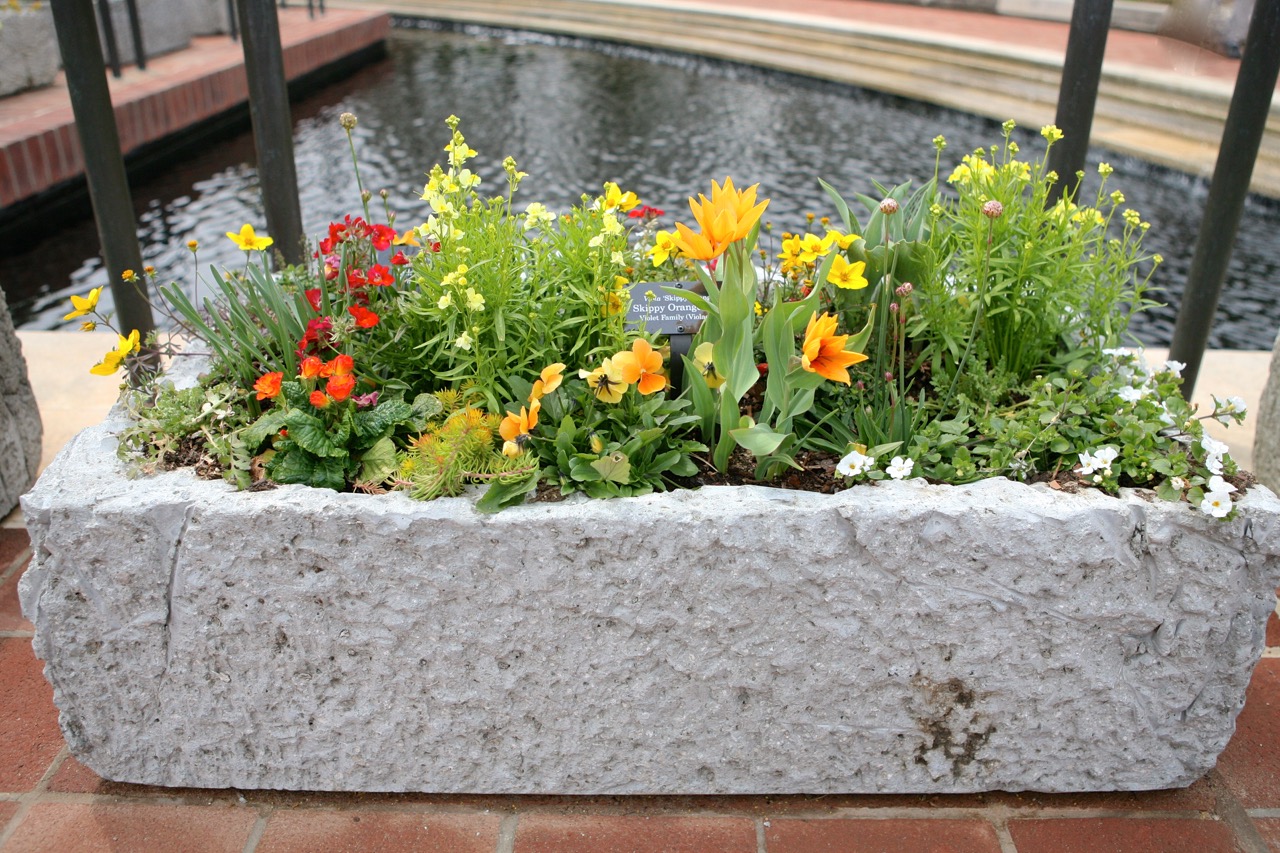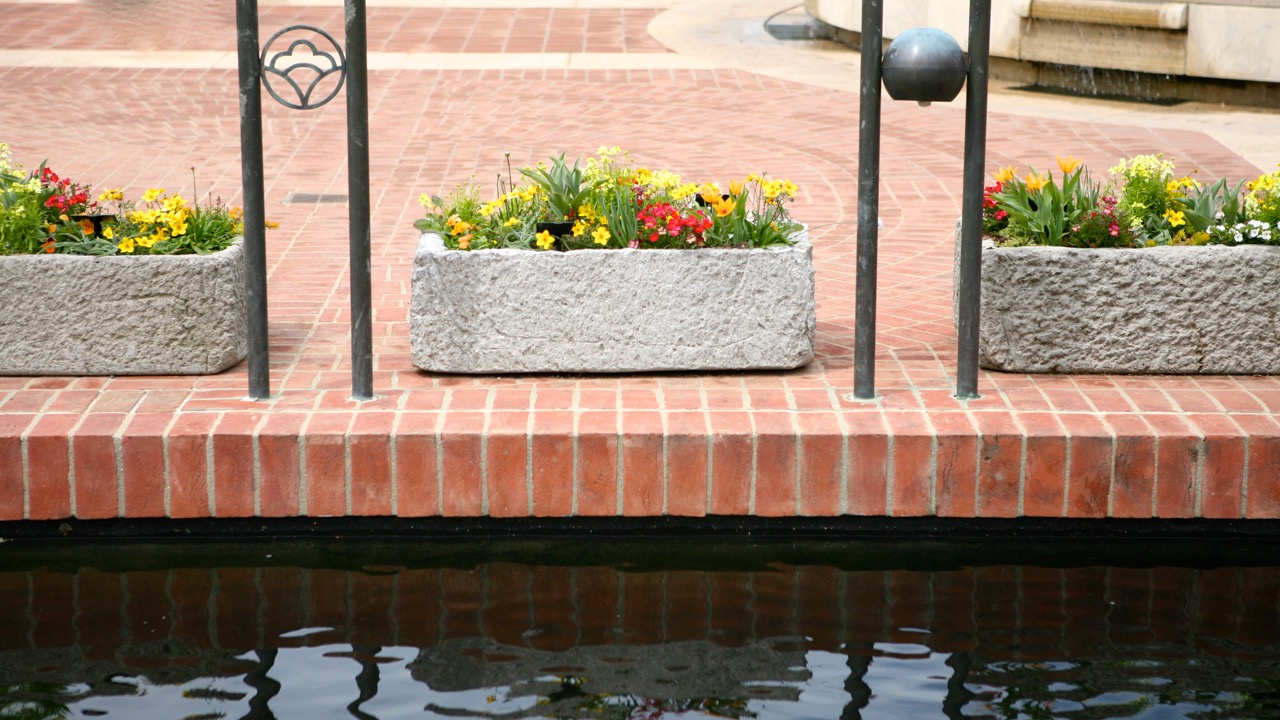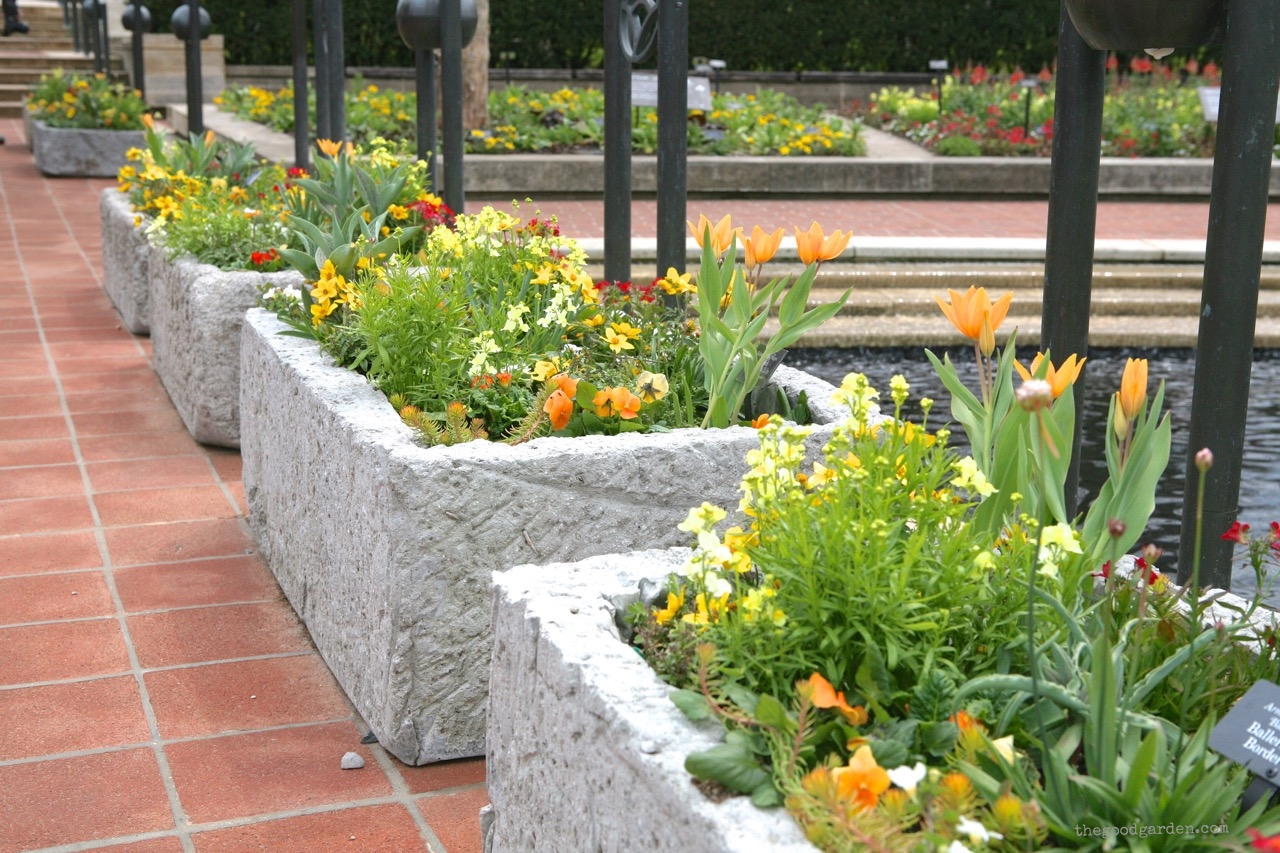Baby blue eyes, Primlet sunrise, Skippy orange, Ballerina white. Just a few of the evocative names for the primrose, violets, tulips, and sedum that fill these hand-made arts and crafts garden troughs. Created to look like carved stone, each one is a border garden unto itself and perfect for shallow-rooted plants. They are a reminder that gardens don’t need to be big to pack a punch and imperfect, hand-made things can be beautiful.
Even better: these garden troughs can be made at home using equal portions of peat moss, perlite, and Portland cement. But don’t try substituting concrete mix for the Portland cement as I did. The mix won’t have enough holding power to compensate for the other added ingredients. The right ingredients will make warm containers that are more lightweight than concrete or stone. Otherwise, your containers will turn to powder over time-- as I learned the hard way. Instructions to make your own, just like these, can be found in the video below.
The set above are from Chicago’s Heritage Garden, part of the Chicago Botanic Garden. The Heritage Garden is dedicated to Carolus Linnaeus, the Swedish naturalist and explorer who developed the “species and genus” scientific naming system that we use to identify plants today. This was the first classification approach based on the natural characteristics of a plant’s flower and fruit. The system had the capacity to accommodate the growing number of new plants being brought into Europe from far away trading posts; replacing other, more arbitrary attempts to classify plants. He shared his work through his book Species Plantarum, published in 1753.
The Heritage Garden is divided into seven beds that display plants based on their geographic origin, and 14 beds grouped by their classification. As opposed to a purely aesthetic garden, this space is essentially a dictionary of plants. The overall design references the world’s first botanical garden in Padua, Italy that dates from 1545.
When I visited the Heritage Garden recently, all of that history was interesting, but it was the garden troughs that stole the show.








